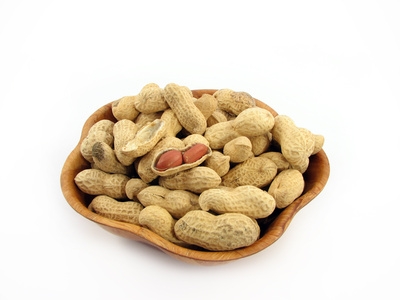
Peanut oil is being used to make biodiesel because it is so cost-effective. Almost any vegetable oil can be converted to biodiesel. One of the most common oils used is soy oil, but researchers are finding that peanut oil is more economical. Fifty gallons of soy oil can be produced from an acre of land compared to 123 gallons of peanut oil from the same-sized piece of land, making the latter an appealing alternative to other oils. Peanuts have been used to make diesel products since Rudolph Diesel made the first engine run on peanut oil in 1900.
Dissolve the hydroxide in the methanol in the bucket. Make sure you are in a well-ventilated area or outside. This mix will make methoxide.
Heat the peanut oil on the gas burner to 55 degrees Celsius (131 degrees Fahrenheit), using the thermometer to check the temperature. Oil splatters when it is heated to high temperatures, so make sure you are using a pot with high sides and protective gear.
Pour the methoxide into the peanut oil, stirring quickly with one of the stirrers. The glycerol will start to separate from the oil and sink to the bottom.
Remove the biodiesel from the glycerol. You now have biodiesel, but you must remove the impurities before you can use it in your engine. You can do this by buying a system that will wash it before it is used or by washing it yourself.
Pour the biodiesel into the conical tank and add twice as much water. The conical tank with valves will let you easily remove the impurities when they settle on the bottom.
Attach the air stone to the aquarium pump, add it to the water and biodiesel mix and turn it on. Let it run for six to seven hours. The bubbles will wash the biodiesel, leaving a sediment on the bottom. Drain the water from the bottom using one of the valves and repeat the wash three to four times until the water is clear.
Dry the biodiesel by leaving the air stone on after the final rinse. The air bubbles will help the water evaporate. The biodiesel is dry when it is clear. It is then ready to use.